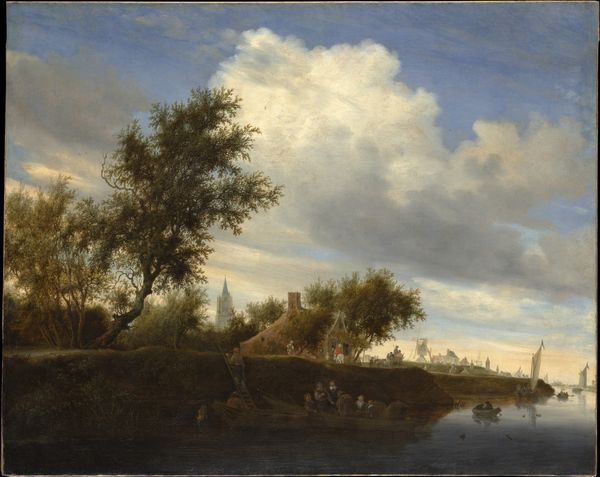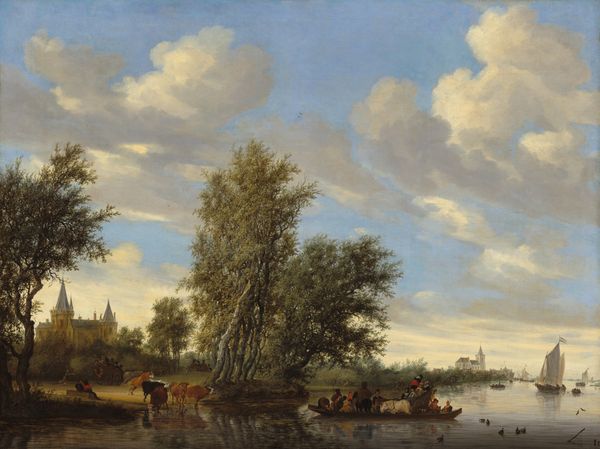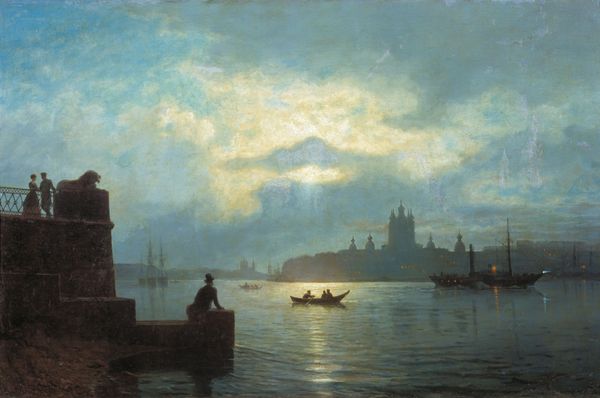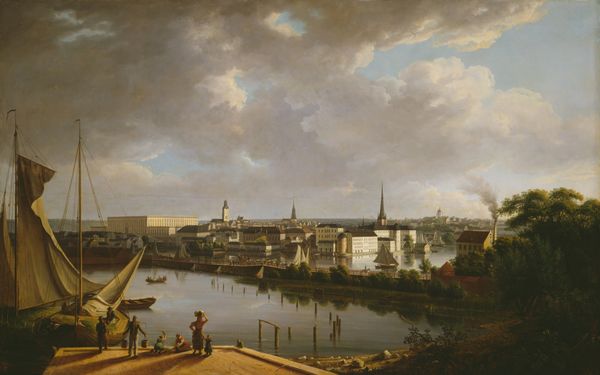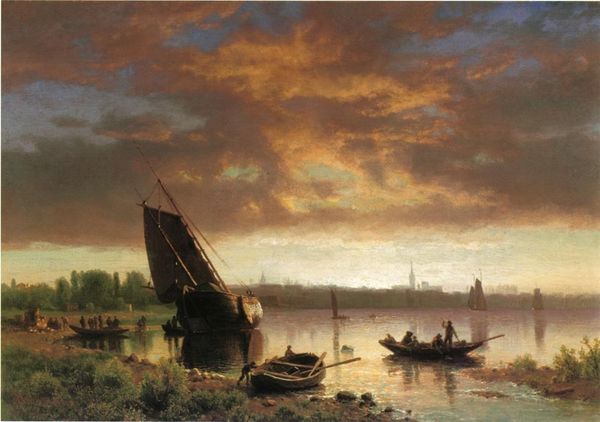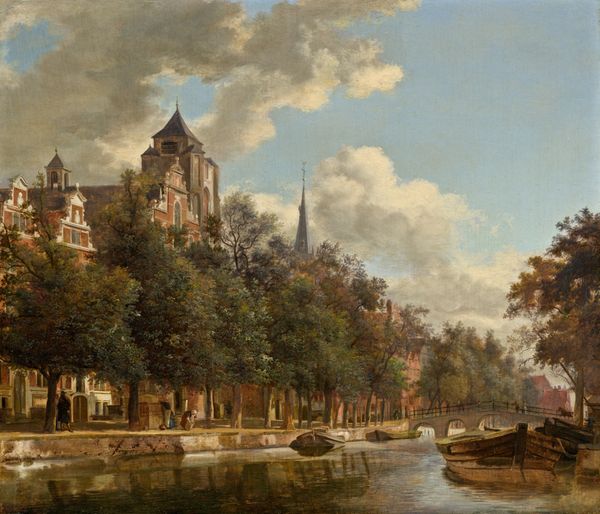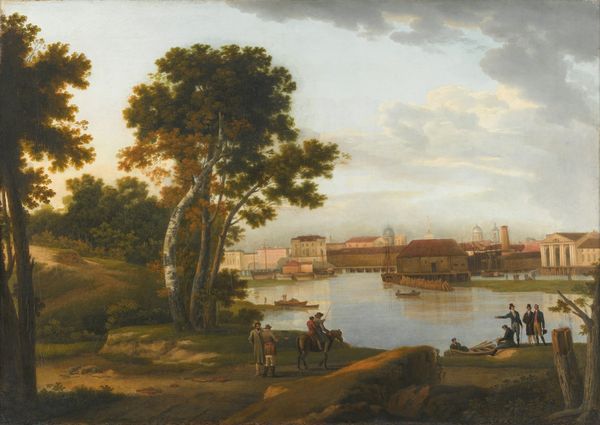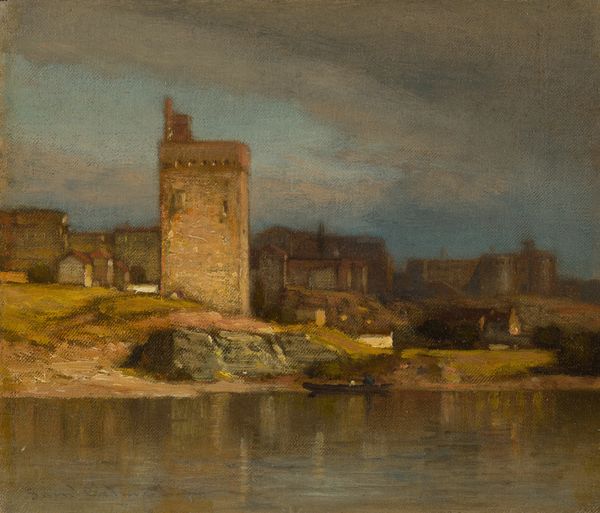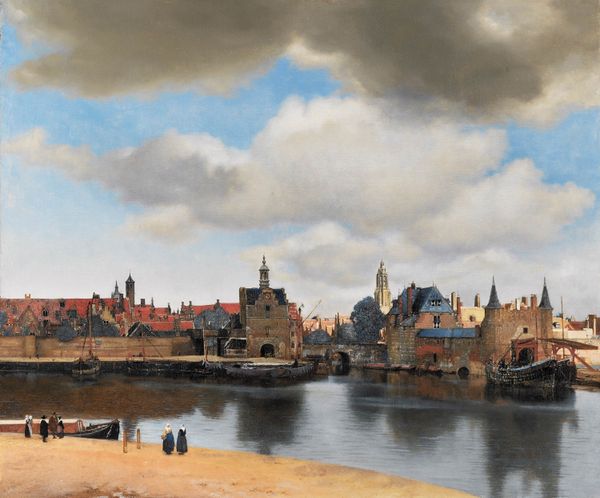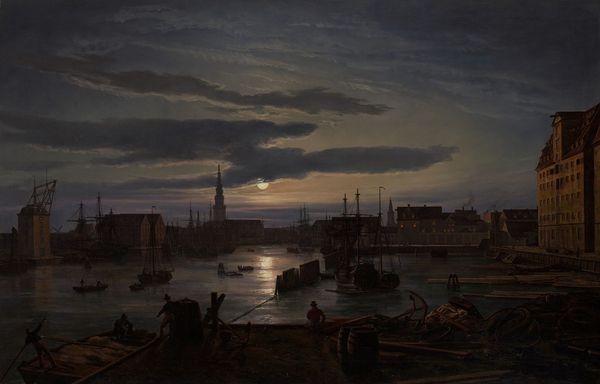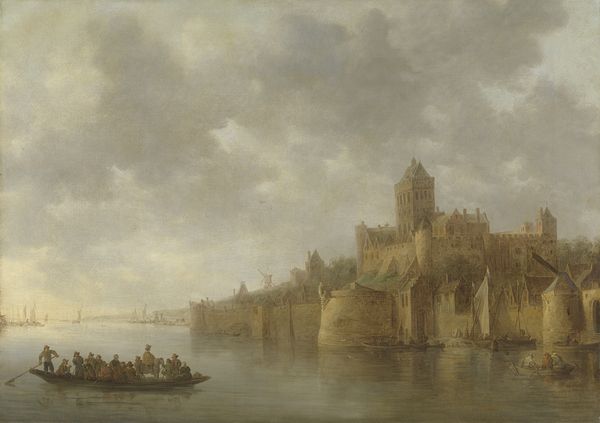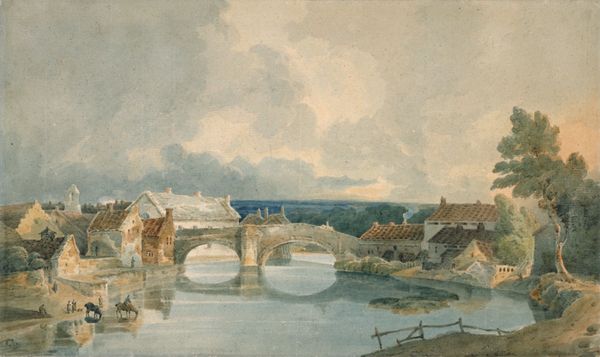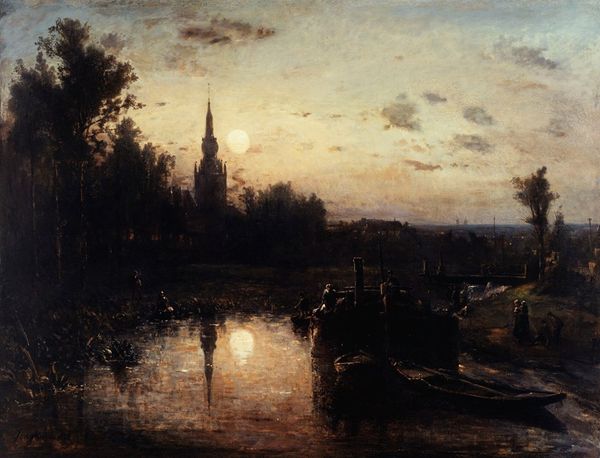
plein-air, oil-paint
#
plein-air
#
oil-paint
#
landscape
#
oil painting
#
romanticism
#
cityscape
Dimensions: 21.91 x 15.24 cm
Copyright: Public domain
Curator: It’s incredibly evocative, isn’t it? The way the light hits the water… But there's a kind of unease too, isn’t it? A brewing storm lurking in the top left of the scene? Editor: It is compelling, especially when considering its historical context. What we are looking at is Knud Baade's "Dresden At Sunset," completed in 1838, an oil-on-canvas cityscape painted en plein-air. Baade situates Dresden as a place undergoing dramatic shifts. Curator: Shifts socially as well as geographically, I imagine. We can see these little figures walking away from us in the foreground. What social codes and political implications did such a romantic vision imply at this historical juncture? Editor: The location itself provides an important lens through which we can explore that query. Baade's choice of subject links to burgeoning civic pride. Paintings like this fueled the transformation of urban spaces as stages for enacting societal change and reform during the 19th Century. We must keep in mind that the sunset presents more than just an idyllic background. It is part of the vocabulary that frames what modernity feels like, from Baade's standpoint. Curator: Exactly! I see it as resistance, perhaps. Remember who commissioned or purchased these idyllic works; their socio-political capital relied, structurally, on the urban changes they spurred. Baade offers us a glimpse into the tension between the city’s potential and its sometimes fraught reality. In 1838, that shift may have affected disenfranchised members of society—this artwork is an elegy. Editor: I would consider, too, Baade's use of light here and its ties to Romanticism. How it transforms the architectural skyline with an aesthetic gloss, masking and unveiling its impact on daily life during this pivotal period in Europe. The looming darkness and sublime skyscape evoke that tension and its power over everyday life for those living through that change. Curator: Thinking about it that way brings up interesting points about Romanticism, as a politicized ideal, deployed within specific contexts, and to whose benefit, in both access to art and urban growth! I now appreciate Baade's commentary on identity as intrinsically linked to space and time much more deeply than I originally did. Editor: And I found myself considering, more acutely, how the artist acts as both an observer and architect of this evolving urban narrative in Germany, documenting change even as the act of observing reshapes it.
Comments
No comments
Be the first to comment and join the conversation on the ultimate creative platform.
